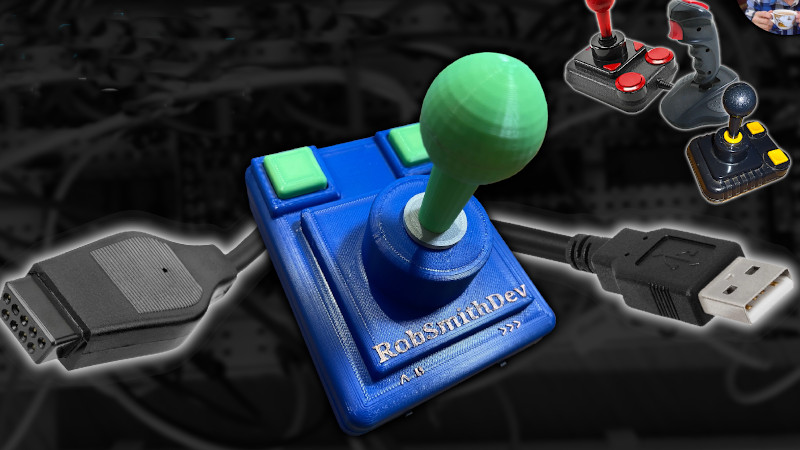With the rise of the gamepad courtesy of several generations of game consoles, the joystick has become an almost forgotten peripheral, sidelined into the world of flight simulators with its design tending towards copying that of aircraft joysticks. Classic joysticks from the 8- and 16-bit eras were far more workaday devices, more suitable for Space Invaders than Microsoft Flight Simulator, and it’s one of these that [Rob Smith] has recreated in 3D printed form.
The design he’s come up with bears a strong resemblance to the Zipstik, a classic stick that he already owned. It’s a fairly simple device that uses microswitches for all contacts, and is thus very tough. He’s produced a 3D-printed shaft but didn’t trust its strength, so copied the original by using a metal shaft with a pair of circlips. We remember our Zipstik as having a steel shaft; he replaces that with aluminium. A handy jig and a hacksaw allows him to create grooves for circlips, resulting in a sturdy ZipStik clone that should satisfy any retro gamer.
The stick is wired for an Amiga and includes a 555-based rapid-fire circuit, but that’s not the end of the electronics as he’s also created a USB interface for Amiga joysticks to go with it. Not everyone has a classic machine, so now everyone can enjoy the retro peripheral experience! Both builds can be seen in the videos below the break.
This isn’t the first Amiga joystick we’ve brought you, but it’s more sophisticated than some previous designs.

















Awww, I wanted a Snark Barker-esque name, I dunno, Quack Sheep II or something.
Oh BTW I have a theory about these sticks getting glitchy because 5v is way too low to keep the contacts clean, would be great if they had a semiconductor isolation mode (i.e. disconnect all 555s used for autofire etc) and let you give it a pounding with 100V applied to blast all the contacts off.
Plenty of relays operate with less than 5V. It’s the current that clears the contacts so some capacitors across them would help punch through the oxide. Cheap contact plating doesn’t help of course, some nice thick gold plating will solve the problem permanently.
Different contact materials are used for different purposes. Both relays and microswitches come in “signal” and “power” versions. Signal contacts are usually gold-plated, power contacts are often a silver alloy. Most cheap switches and relays are the power type, and not really suitable for small-signal applications. Mercury-wetted contacts are the ultimate signal switches.
Well, I don’t want to spoil the fun, but in reality it’s mostly the wires that connect the switches to the computer that break. The wires are thin, bend a lot during the lifetime of the joystick. They are also carefully (but tightly) wound around the base of the joystick at the end of the day and carelessly unwound the next day. Then there is the constant pulling on the cable, because the cable is always too short. And occasionally the joystick is dropped and the wire is ran over by a office-type-chair or stepped upon.
In all my life of using joystick I never encountered a bad microswitch but more then plenty of broken wires, mostly at the base.
I did encounter enough bad switches (in really cheap joysticks), but those simply could not manage the mechanical stress of the enthusiastic user during the heat of the game, with the excessive forces bending and eventually breaking things.
Micro switches? Sounds like you had some high end shit. I had to clean the leaf switches in my joysticks on several occasions.
There where other failure modes too, of course.